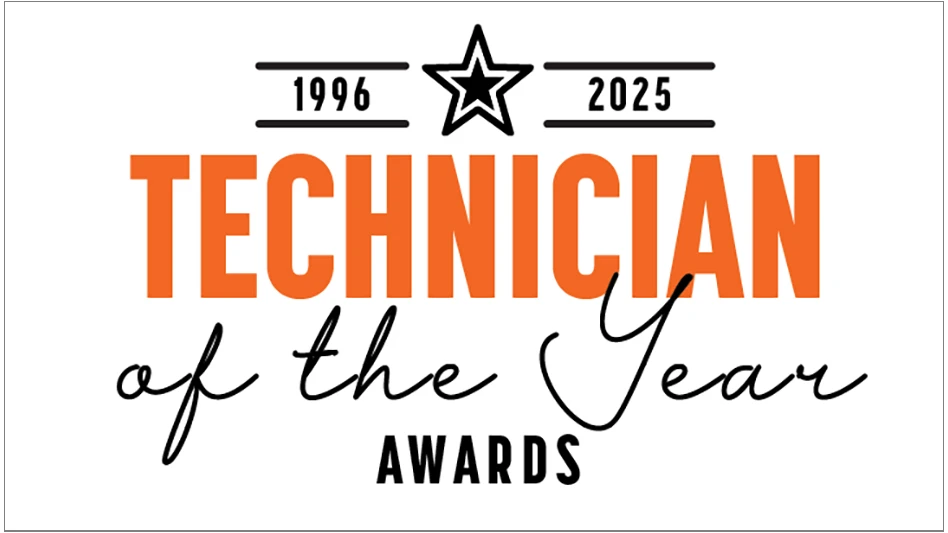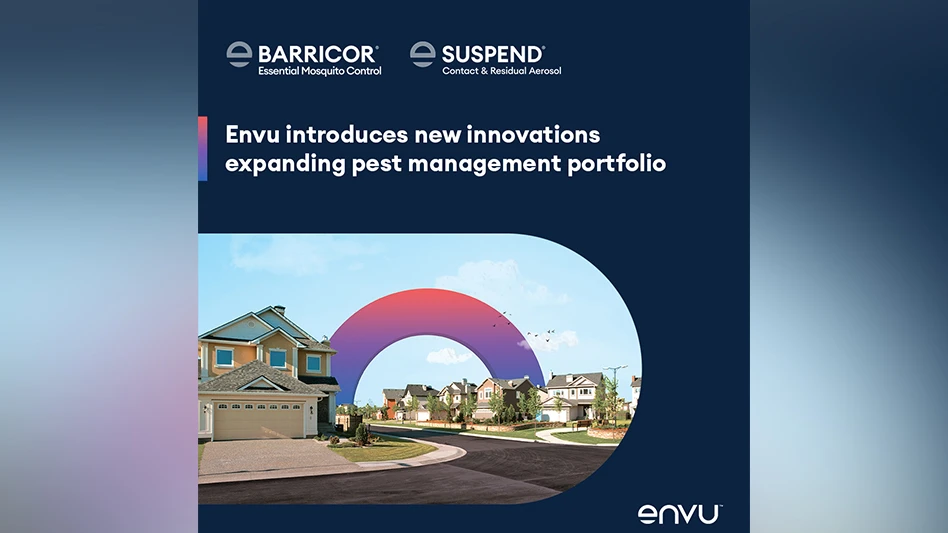In late May, urban entomologists representing academia, industry, government agencies and private consultant firms, gathered in Tulsa, Okla., at the Renaissance Tulsa Hotel and Convention Center for the 11th National Conference on Urban Entomology (NCUE). “Urban Pest Round-Up” was the theme of this year’s meeting. The following three days were packed with presentations covering a wide variety of topics relating to urban entomology. Close to 200 individuals attended the meeting and a total of 81 papers were presented.
The first meeting of the NCUE was held in College Park, Md., and organized by Dr. Eugene Wood, professor of entomology at the University of Maryland. Since that time, the conference has been held every other year with the goal of promoting the transfer of entomological knowledge between academia, industry and government entities, as well as promoting and celebrating the study of arthropod pests in the urban environment. Wood envisioned a forum where academics, consultants and ag-chemical representatives could transfer information to pest management professionals in a relaxed format by focusing on practical presentations that pest professionals can use to broaden their knowledge base of urban pests and learn about the newest research, management strategies and new chemistry performance attributes.
DR. NAN-YAO SU HONORED. Each year the conference kicks off with the Arnold Mallis Memorial Award Lecture, given by the recipient of the Distinguished Achievement Award in Urban Entomology. The 2008 recipient was Dr. Nan-Yao Su, professor, University of Florida Department of Entomology, Fort Lauderdale, Fla. Su presented a lecture titled “Bind the past, define the present, and predict the future — A sequel to ‘Subterranean termites: A personal perspective’ by J.P. LaFage.” In the hour that followed Su provided a great history on the milestones in termite research over the past 100 years. During his presentation Su paid a special tribute to the life and contribution of Jeffrey P. LaFage, an LSU researcher who passed away unexpectedly in 1989. Termites remain a huge business for many pest management professionals, but a lot has changed in control methods during the past 100 years. Su’s historical perspective was a great kick-off for the days that followed.
NEXT GENERATiON OF RESEARCHERS. The remainder of the presentations were organized into submitted paper sections on termites, ants, cockroaches and public health pests, as well as organized symposia on a variety of topics.
Two student scholarship award winners presented their research in a 15-minute paper format. Each of these students competed with others prior to the meeting for a $1,500 award. These students are examples of the bright new minds that choose to study in the area of urban entomology. Alvaro Romero, a doctorate student at the University of Kentucky, discussed a number of research projects he has been involved with on bed bugs. Romero’s work involves providing early answers to a number of difficult questions on what he refers to as the “forgotten pest.”
Preston H. Brown, a master’s student at Virginia Tech University, spoke about his work covering the dynamics of pest ant species in housing developments in Puerto Rico. The red imported fire ant (RIFA) appears to be the No. 1 pest species in the succession of ants. Other species cannot compete with the invasive RIFA.
The next session consisted of six papers delivered by students for the student paper competition. Maria Teresa Ferreira, University of Florida, presented information on drywood termite colonies and their suspected repellency to chlorfenapyr and fipronil. Virginia Tech’s Brown spoke again on the population dynamics of other pest species in the presence of Solenopsis invicta. Ameya D. Gondhalekar, University of Florida, presented a paper exploring toxicity of indoxacarb in the German cockroach. Her findings suggest that this molecule is far more toxic when ingested rather than simply contacted by insects. Her work suggests the insect gut is the most active site for indoxacarb metabolism.
Matthew Tarver, University of Florida, presented his work involving gene expression by eastern subterranean termites in different environmental conditions that may one day lead to novel insecticides that could crash colonies by eliminating reproductive members. Nicola Gallagher, Ohio State University, gave a presentation on termite-mediated alteration of food items. It’s known that termites prefer moist wood over dry wood, but Gallagher presented useful information on this topic. Her talk emphasized the importance of using a moisture meter when conducting inspections.
Finally, Virginia Tech University’s Hamilton Allen presented data on the efficacy of broadcast formulations for control of Solenopsis invicta. The student competition is an important part of this meeting. By presenting their research, students learn public speaking skills and get to share their own “piece of science” with the broader urban entomology community. Additionally, they are able to get to know individuals in the industry. A well-honed and professionally presented piece of research can lead to future employment.
THE LEARNING PROCESS EXAMINED. Dini Miller, Virginia Tech University, and Eric Benson, Clemson University, organized the teaching symposia on how to get students interested in bugs. Susan Jones, Kenneth Grace, Pat Zungoli, Patrick Copps and Roger Gold all spent 30 minutes sharing their latest and greatest tactics for increasing young peoples’ awareness of entomology. The presentations covered kindergartners to undergraduate students. I believe that having some knowledge of these methods can help pest management professionals in real-world field situations. Having a good, solid grasp of general entomology when helping out the homeowner during a routine inspection increases your technicians’ credibility and professionalism with the client.
SUBMITTED PAPERS. In the submitted papers portion of the conference on cockroaches/general pests, a number of interesting papers were presented. North Carolina State University’s Coby Schal explained the methodology used to study cockroach allergens that involve silencing allergen-specific genes by RNA interference. Schal also reported on field studies conducted to elucidate performance of indoxacarb gel bait in infested apartments. Dina Richman, FMC, presented data on the Transport GHP insecticide as a tool for general household pest control. Richard Vetter, University of California-Riverside, presented a study describing some factors that influence shelter preferences of the brown recluse spider. Janet Kintz-Early, Nisus Corporation, presented her latest data on borate efficacy against a variety of general pests and provided a brief history of borates. The group from Bayer Environmental Science presented data on the new Maxforce FC Magnum Cockroach Bait Gel in “problem accounts” and the residual efficacy of Maxforce Fly Spot Bait with imidacloprid.
Termite papers and presentations again dominated the program as they did in 2006. Nearly 50 percent of the papers pertained to termites in some way.
Among these were a series of papers in a symposia titled “Biodiversity of termites from the Americas.” Papers focused on the diversity and geographical distribution of invasive and endemic species throughout Central and South America. Reginaldo Constantino of the Universidade de Brasília delivered an excellent description of termite diversity in South America.
Another symposia titled “Powderpost beetles, Formosan termites and other New Orleans pests” included an update on the area-wide Formosan termite control program in the French Quarter of New Orleans; the effects of juvenile hormone agents and biogenic amines on this same pest; an interesting presentation by Mary Cornelius, USDA-ARS, on aggressive interactions between two different Formosan colonies; and an overview of tree and individual property inspection protocols to help control this pest in the city of New Orleans.
TERMITE RESEARCH STILL POPULAR. The submitted papers on termites consisted of eight different presentations on a variety of topics. Paul Baker, University of Arizona, presented a new method for marking termites for studying foraging and feeding as the population disperses. Efficacy studies on the Exterra/Labyrinth AC termite baiting system conducted in Ohio were presented by Susan Jones of Ohio State University. Susan King, University of Delaware, discussed current work with DNA analysis of termite communities in Delaware. Don Reierson, University of California-Riverside, talked about dose distance and transfer capabilities of indoxacarb with western subterranean termites. Finally, Jianzhong Sun, Mississippi State University Coastal Research and Extension Center, presented a very intriguing talk titled “Why wood-feeding termites could provide better biofuels.” While not directly related to urban entomology, this presentation was thought-provoking and made many attendees — including me — think about the implications of fuel costs to our industry and others.
The final termite symposium was titled “Termite behavior: Better understanding for better control.” Paul Bardunias, University of Florida, presented some very fascinating work on termite tunneling behavior. Understanding these tunnels provides researchers with a better understanding of termite movement and provides a way to pattern behavior. Brian Forschler, University of Georgia, discussed the utilization of individual animal sampling via filming to peer into the mechanics of worker behavior with eastern subterranean termites. Another researcher from this same lab, David Sillam-Dusses, provided observations on wild populations of termites and their responses to different-sized food resources. Xing Ping Hu, Auburn University, reported findings on social interactions between eastern subs after exposure to non-repellent insecticides. After treatment with such compounds, interaction is vital to permit transfer of insecticide from individual to individual. Many bait and non-repellent residuals rely on physical contact with other colony or nest-members in order for the product to work as intended.
OTHER HOT TOPICS. John Klotz, University of California-Riverside, moderated the 15-minute submitted paper section on ants and bees. Eight different presenters shared new information. John Warner, University of Florida, shared new data on controlling field populations of big-headed ants with residuals and bait applications. Argentine ant baiting strategies using large liquid bait dispensers were discussed by the group from University of California-Riverside. Papers on odorous house ants control strategies were presented by Virginia Tech’s Brown (from the student competition) and Karen Vail, University of Tennessee.
Another symposium on ants titled “Emerging invasive pest ants of importance” provided attendees with a description, basic biology and potential management tools for three distinctly new emerging ant pests. Laurel Hansen, Spokane Falls Community College, provided insight on Liometopum sp. ants as an emerging structural pest. Additionally, M. Blake Layton, Mississippi State University, shared life history information on Brachymyrmex patagonicus, a rover ant species that has been appearing in Mississippi. And Pat Zungoli and Eric Benson, Clemson University, discussed the medically important Asian needle ant, Pachycondyla chinensis.
Syngenta’s Deanna Branscome moderated an informative symposium titled “Blood-sucking hitchhikers — the return of fleas and ticks.” The industry simply does not hear much about these pests in comparison to cockroaches, ants, flies, and termites, termites, termites. However, the presenters provided a good refresher and update on these pests. Bill Kern, University of Florida, discussed flea diversity in the urban environment and reviewed the natural history of the common species in the southeastern United States. Nancy Hinkle, University of Georgia, presented more specific information on flea behavior and biology relating to control strategies. Peter Teel, Texas A&M University, presented a nice review of general tick ecology and current management strategies in the urban environment.
Ellen Thoms, Dow AgroSciences, moderated the submitted paper session titled “Public health pests.” In this session, Thoms herself presented a paper that examined the effects of cargo container configuration, sealing methods and fan duration on the confinement of Vikane gas fumigants.
The other three papers in this symposium were all aimed at bed bugs. Byron Reid, Bayer Environmental Science, discussed several instances of insecticide resistance and some practical methods for managing these sorts of bed bug infestations. Eric Snell, Snell Scientifics, reviewed research on egg survival after being treated with a variety of different compounds.
Finally, University of Kentucky’s Romero delivered a paper titled “Bed bug insecticide research: What have we learned?” The bed bug “craze” continues to build as there are very few options currently available that work well. Additionally, continued study of behavior and biology of this pest will hopefully lead to a better understanding of how pest management professionals can better utilize the compounds that they do have available.
A BENEFICIAL CONFERENCE. The 2008 NCUE concluded, as it always does, with the final business meeting. Several topics were covered, but most importantly the site for the 2010 NCUE was accepted. The next conference will be held in Portland, Ore., sometime in the spring (exact dates are yet to be announced).
Attending one of these conferences is a great way to expand one’s knowledge on the cutting-edge research and product developments for our industry. You now have a two-year reminder to mark your calendar for the 2010 meeting. It’s a great opportunity to learn what is going on in both academic and industrial-based research covering both basic and applied aspects of entomology and pest management practices. Moreover, it’s a fantastic opportunity to network with the “who’s who” of urban entomology in a small forum — practically every attendee is studying some aspect of pest control that will ultimately make your job as a pest management professional easier and more efficient. Hope to see you in Portland in 2010!
The author is an entomologist living in Racine, Wis.

Explore the September 2008 Issue
Check out more from this issue and find your next story to read.
Latest from Pest Control Technology
- How to Get Rid of Odorous House Ants
- Massey Services Promotes Herndon to Director of Sales for Multi-Family Division
- NPMA Announces First Recipients of NPMA PRO Certified Credential
- Pestmaster of the Hudson Valley Acquires Catskill Animal Damage Control
- Photo Slideshow: Ant Identification Tips
- Video: Top 10 PCT Photo Contest Finalists
- UF/IFAS Study Reveals Boats as Perfect Vessels for Global Termite Spread
- Pest Control Consultants (Iowa) Earns Pinnacle Performance Award





